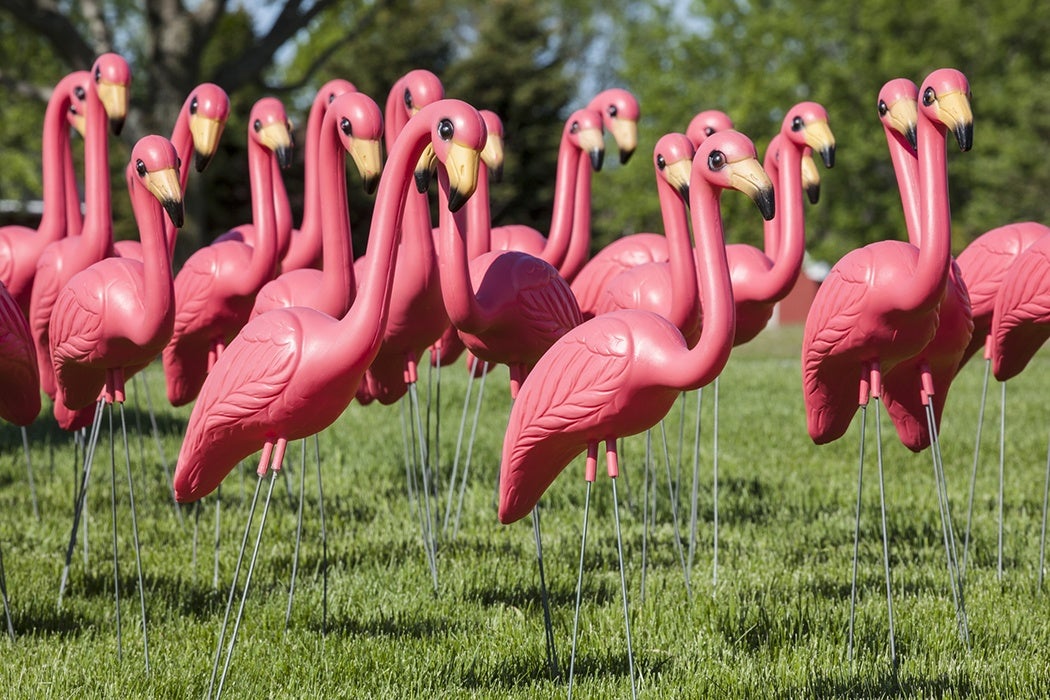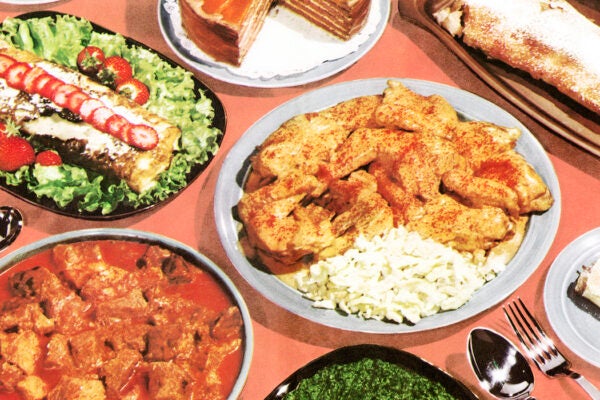The pink flamingo is just about 60 years old. Yes, the plastic lawn ornament was actually created by someone; designer Don Featherstone to be exact, during his second year on the job at Union Products. Jennifer Price gives a “natural history” of this culturally over-determined object’s rise to camp icon.
Lawn ornamentation has a long history. Prehistoric Greeks decorated gardens with statues of the well-endowed Greek god Priapus to promote fertility, scare birds away, and potentially to threaten the sexual violation of trespassers. Price begins her lawn ornament survey in the more decorous early 1800s, focusing on the invention of taste. “Taste, you could say, is a style of consumerism. It is also a statement of identity […] Taste was, to some degree, an upper-class injunction to restraint that cautioned the new consumers not to presume to be truly wealthy.”
Not everyone could afford a landscape architect, or a gardener, or even a lawn, for that matter. But the appeal of wealthy and middle-class models of nature around the home spread throughout society. Grottos or swan might be out of the question, but cast aluminum animals, popular in the 1920s, were within reach. In the 1930s, concrete animals, especially DIY ones, were the rage.
Union Products tapped into the post-WWII spread of suburbanization and the wondrous age of petroleum byproducts to make “plastics for the lawn.” In 1956, they hired Featherstone, fresh out of art school. The pink flamingo was born the next year. (His first product, the polyethylene “Charlie the Duck,” actually outsold his flamingo for decades.)
The first consumers of the pink flamingo lived in working-class subdivisions, while “middle-class suburbanites gave it a wide berth.” There were diverse sources of appeal: the hot pink, a new and exciting color; the plastic, the miracle material; the exotica of Florida. No matter that actual flamingos had been hunted to extinction before the 20th century in Florida: as icons, they proclaimed “Florida’s cachet of leisure and extravagance.”
Then, in the 1960s, there was a revolt against middle class taste, often by the very children of the middle class. The pink flamingo lawn ornament was celebrated as a marker of “anything rebellious, outrageous, or oxymoronic.” This reached its apotheosis in John Waters’s 1972 cult classic Pink Flamingos, in which the (anti-)heroine, who lives in a trailer surrounded by pink flamingos, competes for the title of “filthiest person alive.” The pink flamingo had arrived, becoming the “ubiquitous signpost for crossing various, overlapping boundaries of class, taste, propriety, art, sexuality and nature.”
Weekly Digest
A dozen years later, Miami Vice phenomenon revived the market for Florida kitsch: 1986 was the year Union Products’ pink flamingos finally started out-selling their Charlie the Ducks. In 1987, the governor of Massachusetts, Union Products’ home, declared the pink flamingo “an essential contribution to folk art.”
Price argues that this “symbol of artifice is actually nature incarnate” because it is, after all, a product of petroleum and metal, “nature mined, harvested, sold, heated, boxed, resold and shipped.” And then planted right in the yard.







